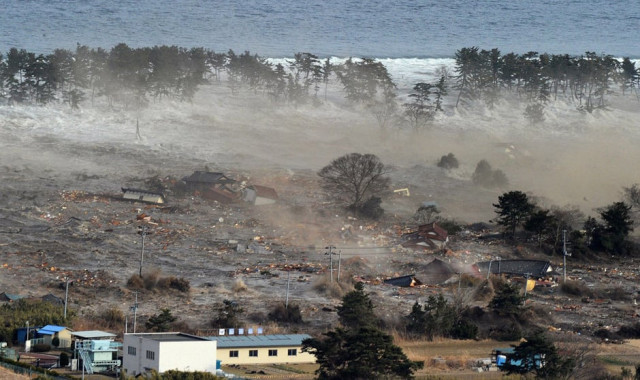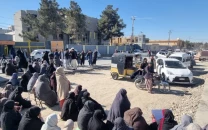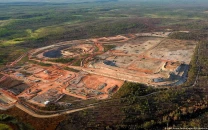Impending danger: Balochistan remains at risk of tsunami, earthquake: geologist
Geological research indicates increased seismic activity, fears rupture in subduction zone

Quetta, according to Dr Kakar, is also under imminent danger of an earthquake of a magnitude comparable to that of the deadly 1935 earthquake.

According to Dr Kakar, the province’s coastal line may witness the worst devastation due to a tsunami, if the Makran Subduction Zone in the Arabian Sea undergoes a movement.
“A movement in the Subduction Zone will generate either five- or nine-metre high tsunami waves, which will hit the coastal regions of Balochistan and Sindh,” Dr Kakar told The Express Tribune.
Dr Kakar, who is associated with the University of Balochistan, said the findings of a study carried out in the coastal regions suggest that the probability of a tsunami has increased in Gwadar and its adjoining coastal region.
The researcher, Dr Kakar, has extensively worked on tsunami and earthquake threats in Balochistan and is closely monitoring the situation.
“There are two possibilities. If there is movement in Makran Subduction Zone in Arabian Sea, then four- to five-metre high tsunami waves will hit Gwadar, Pasni, Ormara and Thatta and Badin in Sindh,” he said.
However, if there is a rupture on the 900 kilometre- long Subduction Zone, then the sea will generate nine-metre high tsunami waves, which will hit not only Gwadar and areas of Sindh but also Chabahar in Iran, Muscat, Oman and adjoining coastal areas, he said.
The expert also referred to the 1945 tsunami in Gwadar which was devastating.

“I have interviewed 78 survivors, who are now 100 years old and living in Gwadar and Badin areas. My estimate is that at least 1,000 people were killed in the calamity,” he said, adding that there may now be another tsunami.
Dr Kakar said Gwadar is constructed without considering the previous tsunami. “The areas which were devastated in 1945 by 5-metre high tsunami waves are now constructed again. There will be huge destruction as no planning has been done,” he said.
Quetta at risk
The geologist claimed that Quetta is at a high risk of an earthquake. “Research findings suggest that Quetta and its adjoining areas may be rocked by an earthquake more devastating than the
1935 earthquake anytime soon,” he said.
He said the modern equipment installed in different areas –including Awaran – have reported development of strains.
“The earthquake load is piling up in plate boundary of western Pakistan. There may be a major earthquake – over 7 magnitude on the Richter scale, in Quetta, Kalat, Khuzdar, Chaman and some areas of Afghanistan,” he said.
He said these are sensitive areas, which fall on Naushki-Chaman fault line, which stretches towards sea through Lasbela district. Studies say there would be intensive seismic activity, which will badly affect the western areas of Pakistan, Kakar said.
He said this time the devastation would be worst in Quetta, whose population is around two million now.
“At least 30,000 people died in Quetta within five seconds of the earthquake in 1935. British rulers introduced a building code law after two years as precautionary measure for the minimum damages,” he said, adding that the law is no longer being implemented in Quetta.
Published in The Express Tribune, October 20th, 2014.



















COMMENTS
Comments are moderated and generally will be posted if they are on-topic and not abusive.
For more information, please see our Comments FAQ